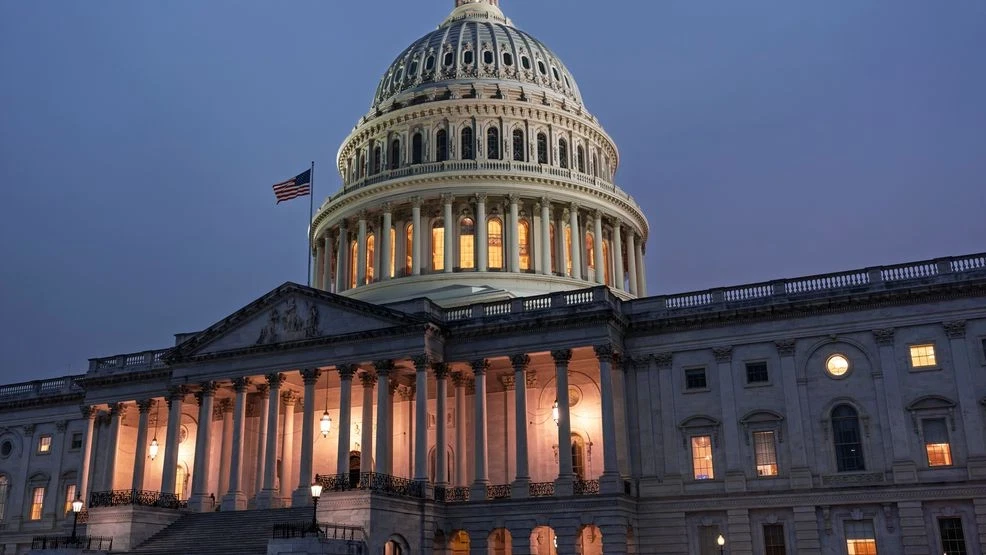Copyright Baltimore News

The nationwide redistricting fight took another step forward this week with North Carolina’s Republican-controlled legislature approving a map that is likely to take away a Democratic-held seat in the upcoming midterms in hopes of boosting the party’s chances of retaining its narrow majority. North Carolina’s Republican-controlled state legislature likely giving the party one more GOP-leaning seat in the upcoming elections. Combined with other states, it is the seventh new red-leaning seat added to the map ahead of the 2026 midterms. Midterm elections typically favor the party out of power in Washington as voters revolt against the current administration, which would favor Democrats to retake the narrow House majority back from Republicans. Democrats are also helping the favorable political environment would allow them to flip some Senate seats, though the map is not favorable for the party to retake control from Republicans. President Donald Trump and other White House officials have pressured Republican legislatures across the country to remake their maps in time for the midterms in hopes of staving off a Democratic majority that would hurt his ability to implement his agenda. Republicans have said the gerrymandering is in response to blue states like Illinois and Maryland, though many of them also have congressional maps that do not reflect the state’s political makeup. Among them is North Carolina, which is regularly a closely decided swing state in presidential elections but will now likely have 11 of its 14 seats represented by Republicans. “North Carolina Republicans will not sit quietly and watch Democrats continue to ignore the will of the people in an attempt to force their liberal agenda on our citizens,” state Senate leader Phil Berger said on X on Tuesday. “This new map respects the will of the North Carolina voters who sent President Trump to the White House three times.” North Carolina’s redistricting is just the latest in a series of state taking the unusual step making new maps in the middle of the decade that was kicked off when Texas remade its maps to redraw five new Republican-leaning districts. California is trying to retaliate with its own map creating five safe Democratic seats but will need the for the plan to take effect. But other states are still considering joining the fray. Indiana is also considering redrawing their maps for Republicans, while Maryland and Illinois have also suggested they could pursue it. While Democratic leaders in multiple blue states have said when it comes to the gerrymandering fight, they have less ability to redraw maps due to laws requiring independent or other commissions to create them. How the maps shake out is still up in the air as more states consider attempting their own redraws and an avalanche of work their way through the court system. Democrats only need to flip a handful of seats to retake the majority from Republicans, but that is growing more difficult with each state adding to the redistricting tit-for-tat that could decide the balance of power. “The jury's still out on that because it feels like Texas and California kind of offset each other,” said Shawn Donahue, a clinical assistant professor of political science at the University at Buffalo who studies redistricting. “The Democrats just don't have that much ammunition to be able to really offset a lot of what Republicans are probably going to do in other states. In the end, it might be that Republicans have the potential to pick up mid to upper single digits, maybe 10 seats out of all of this.” In addition to the state-led efforts, Democrats’ challenges with the maps could face another obstacle depending on how the Supreme Court rules on a The high court heard a lawsuit challenging a key provision of the law and could limit the ability of lawmakers to use race as a factor in drawing congressional maps. Depending on how the court rules, many Democratic seats in otherwise heavily Republican-leaning states across the south could we wiped out in following cycles with new maps. Some voting rights groups have said if justices gut a key provision of the law, Section 2, it could pave the way for as many as 19 seats being redrawn to lean Republican. A decision on the case isn’t expected for months, and the timing of its release will impact whether it’s feasible for states to create new maps in time for the 2026 elections. If it comes too close to Election Day, states will have already had filing deadlines and primary elections for existing districts that would be challenging to undo. But if the justices were to rule in favor of weakening Section 2 early in the year, it could add to Republicans’ advantage in the maps. “If this does come in time for the 2026 election, added together with the other political gerrymandering, you get to a point where it becomes where Democrats almost need a landslide to win the House,” Donahue said. “It makes it where the House is going to be hard for Democrats — really, to win — outside of a landslide year.”



